Run Your Best Half Marathon: 5 Top Tips!
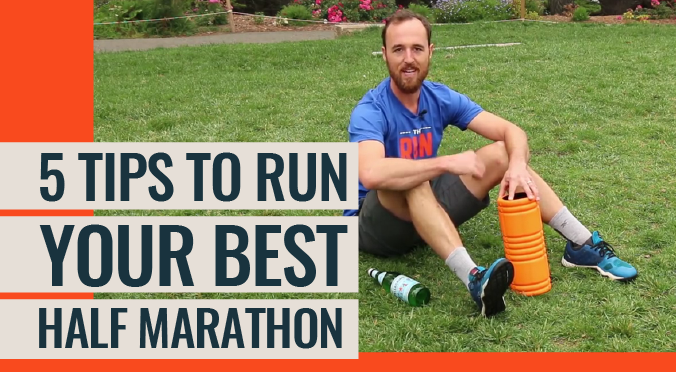
The half marathon distance is no joke! To ensure success on race day, you’ll want to get your training plan dialed in ASAP. Check out these 5 tips to run your best half marathon!
Tips For Running Your Best Half Marathon: Running Mechanics
One of the greatest challenges on race day will be maintaining your desired pace through the finish.
You may be tempted to come out of the gate too fast, you might be dealing with warm conditions, nerves, the list goes on…
Mechanics are the one piece of the puzzle you will ALWAYS have control over when all else fails.
Fine-tuning these throughout your training is key.
Great running form includes:
- Hips forward
- A straight back and upright chest
- A powerful, parallel arm swing
- Activated hamstrings and glutes
Today, we’ll tackle the last one.
Activated hamstrings and glutes allow us to pull our feet off the ground for the most efficient, least injury-inducing run stride.
Here’s our favorite drill for this:
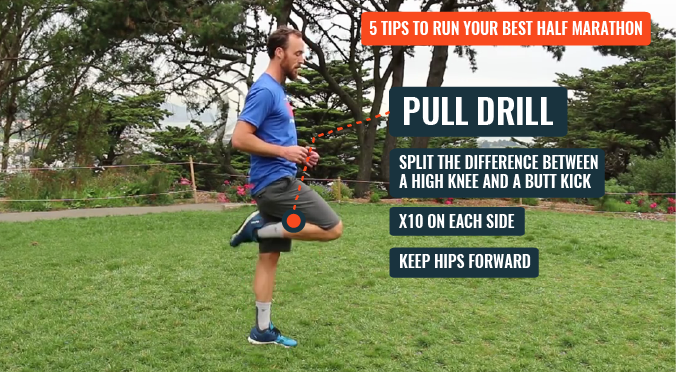
- Start standing tall on two feet.
- Pull one foot off the ground, bending the leg and slightly flexing the foot.
- The heel should draw up the inner thigh of the opposite leg.
- Find something between a “high knee” and a “butt kick”.
- Now add some speed to the pull.
- Repeat 10x.
- Now do the same on the opposite leg.
Step two:
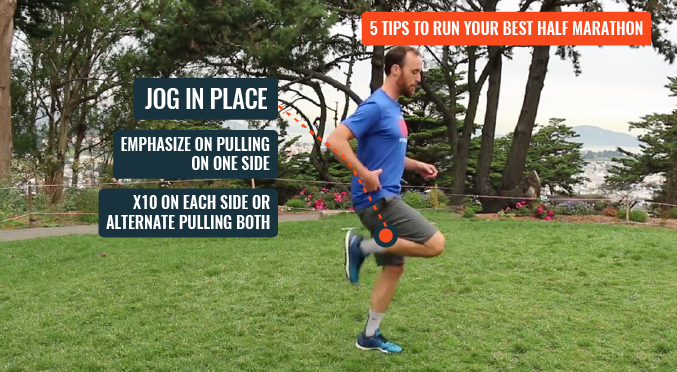
- Begin jogging in place.
- Now start emphasizing the pull on one side every other step, for 10 times.
- Repeat on other leg.
- Now continue jogging while exaggerating both legs to create the pulling motion for 20 seconds.
- Repeat twice more.
This drill is most effective when done at least once a week. Feel free to execute it during your next long run!
Tips For Running Your Best Half Marathon: Practice Speed
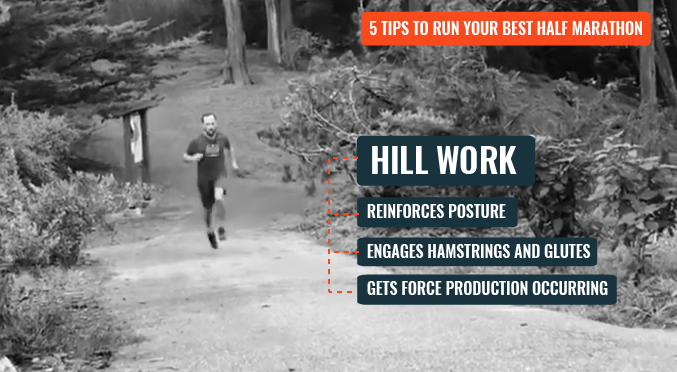
You’ll definitely want to push your (endurance) limits BEFORE getting to that starting line!
Like we’ve told you before, in order to run fast you need to run fast.
We believe that hill work is the way to go.
Hill running is efficient, low impact, HARD, and demands good form.
In order to get up a hill, you need to push your hips forward, engage your glutes and hamstrings, pump your arms and take small steps.
All of this in combination with good breathing and a little courage will create a world of difference for your stamina!
Try throwing in 1-2 hill workouts per week.
Here’s an idea for what to do:
- Find a hill with a 5-8% gradient.
- Perform 10 rounds of a 20-30 second (depending on the athlete) all-out run up the hill.
- Jog back down as recovery between rounds.
- Make sure to cool down & mobilize afterward.
Tips For Running Your Best Half Marathon: Get Strong
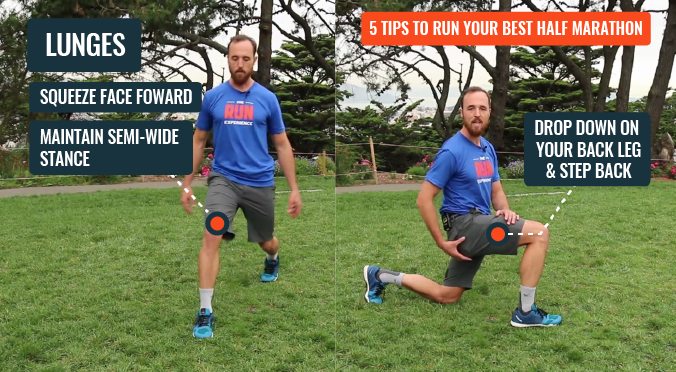
Running itself requires a very narrow and specific range of movement.
While the race itself will only require you to run, the training should include a LOT more.
Strength training does wonder for your joints, bone density, mobility and preventing injury.
It also highlights problem areas or weaknesses in your running.
Let’s take for example the lunge.
A lunge is a simple movement that can tell us a lot about the way we run.
Try this:
- Start standing tall on two feet.
- Now step out with one leg to find a semi-wide lunge stance.
- Toes should be pointing straight ahead.
- Back knee should be facing the ground, bent at about a 90-degree angle.
- Now, look down.
- Is your front knee caving in?
- Is the arch of your front foot collapsed into the ground?
- Is your front knee jutting out over your toes?
All of these things can tell us what our running form “defaults” are.
In a perfect world, your lunge should look like this:
- Front leg knee should be directly over the ankle.
- Hips should be pressed forward.
- Glutes should be squeezed.
- Core should be engaged.
- Chest should be facing forward, back straight.
- Back leg knee should be pointed towards the ground, and in line with foot/ankle.
Here’s a good drill to throw in once a week:
- Perform 1 minute of alternating walking lunges.
- Rest 1 minute
- Repeat 5 times.
For an added bonus:
- Replace walking lunges with jumping lunges.
- From the bottom of each lunge, you’ll press equally off both feet to jump up and switch to land in an opposite lunge.
- The drill will use the same format: 5 rounds of 1-minute work.
- Rest 1 minute between each round.
Make sure you stretch afterward…you’ll be sore!
Tips For Running Your Best Half Marathon: Take Care of Yourself!
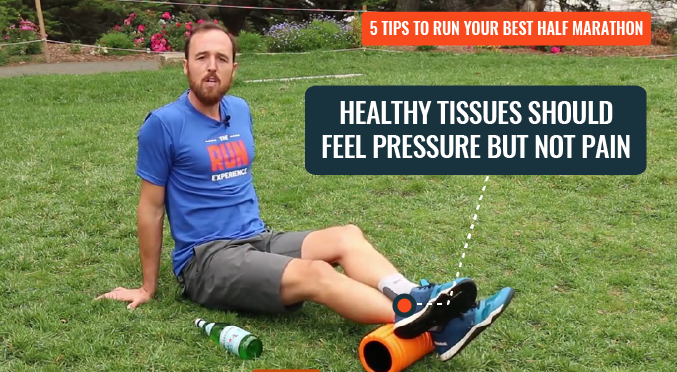
Running injuries usually don’t come out of nowhere!
At The Run Experience, we believe in performing regular maintenance on the bodies that we demand so much from. Taking a few minutes a day to “look under the hood” will help us prevent those injuries from inhibiting us in the first place.
This muscle tissue maintenance can be accomplished with a few different tools that can help us find pressure points to mobilize around.
Our “go-to”s are typically a foam roller, a lacrosse ball, and/or a coffee mug or water bottle.
Here’s an example of how we’d address our tight calves:
- Grab a foam roller (or hard surfaced water bottle if you’re looking for something more intense).
- Sit down on the ground with one calf resting on the roller/bottle.
- Now cross your other leg over top of that leg, connecting at the ankles.
- From here, use your arms to raise your hips off the ground.
- Roll your bottom leg side to side, over the roller surface.
- You can also circle the ankle of the leg on the roller.
- Try creating 10 circles in each direction.
- Spend 3-4 minutes on each leg.
For more ways to mobilize, check out this video we did on how to use a lacrosse ball for runners!
Tips For Running Your Best Half Marathon: Use Your Community!
In order to run your best half marathon, you’ll need to commit to your training!
This means running when you want to, and also when you don’t. Running when it’s dark, cold, you’re tired, something shitty happened at work.
Well, guess what!
You aren’t the only one training for a half marathon.
Look around, there are runners doing what you’re doing everywhere in the world! They’re dealing with the same soreness, fatigue, busy schedule, taking care of their family…
The beauty of this day and age is that worldwide communication is at our fingertips, whenever we want it!
Join the running community – be it an online running group, a local running store group, a few friends in your neighborhood. Start talking to them! Tell them your training plan for the week, how you’re feeling, ask for advice, post a photo. These are your people and they care!
They can get you out the door on a dark, rainy morning, calm your nerves before a big race, and even save you from overdoing it on a sore ankle.
Strength in numbers 🙂
So start implementing these 5 tips to run your best half marathon! You’ll be glad you did.
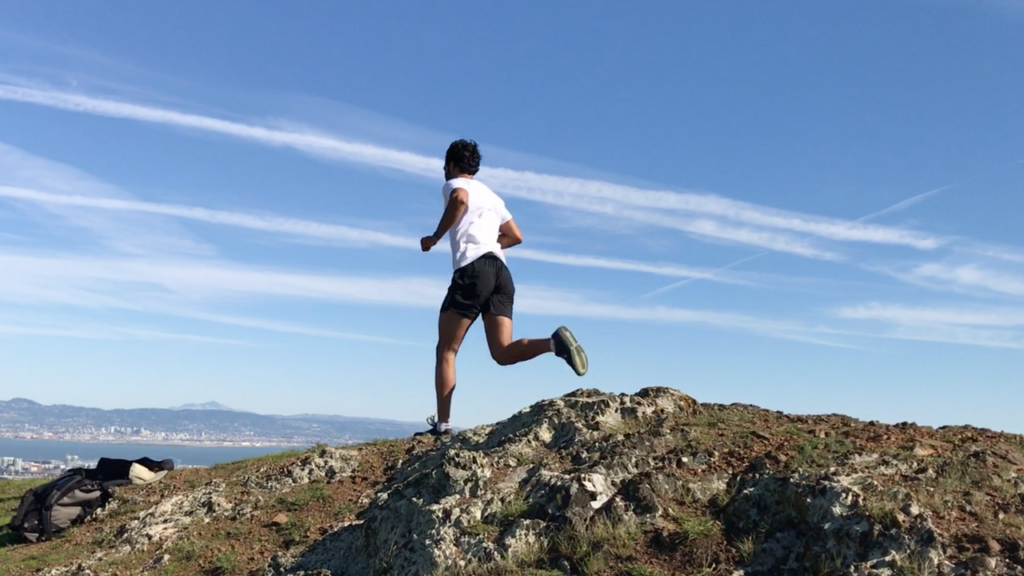
For sticking with us to the end, enjoy a FREE 44-page Half Marathon Training Guide! We put a lot of work into building it and we just know it’s going to help you crush that half marathon 🙂 Get it here.
